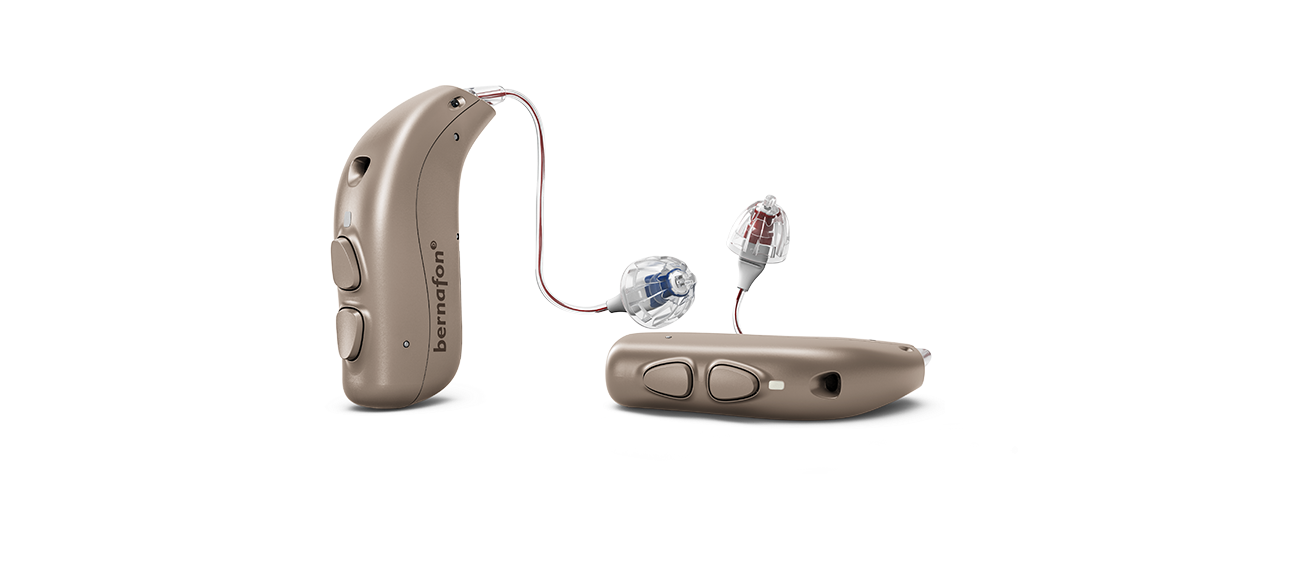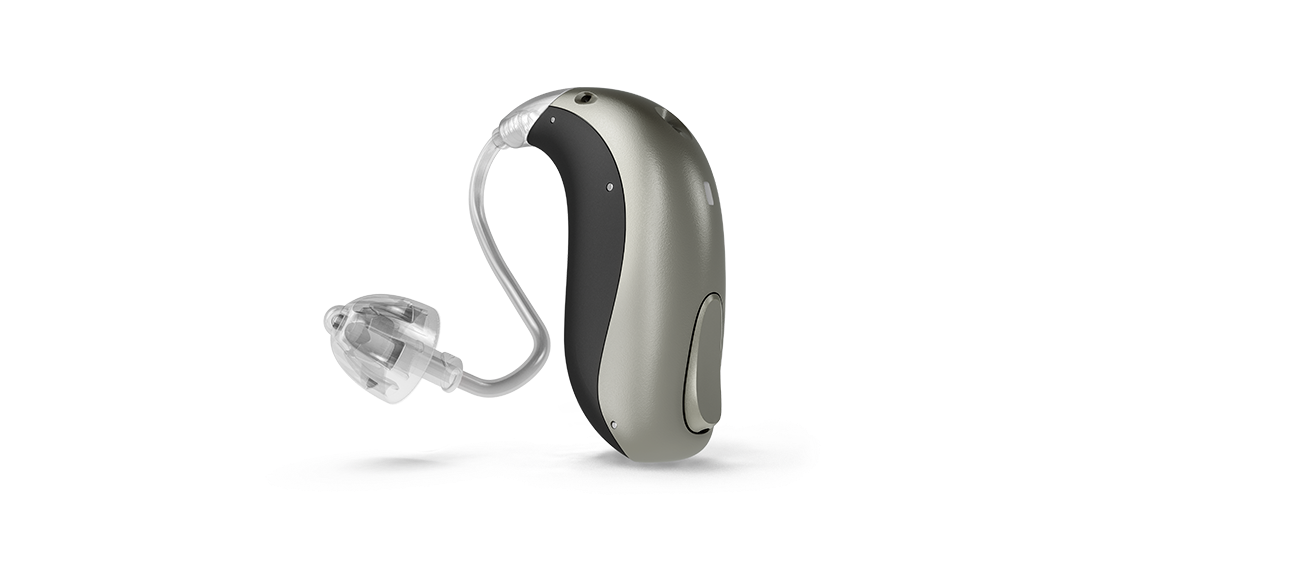How to clean your hearing aids
Find out all you need to know about keeping your hearing aids hygienic and ensuring they remain in good working condition.
Before you start
You need to be certain what style of hearing aids you have because the cleaning instructions are very different for different models. You can find instructions for cleaning each type of hearing aid below.
As a general rule, clean your hearing aids and earpieces each day with a soft, dry cloth. Make sure your hands are clean and dry before handling your hearing aids, and hold your hearing aids over a soft surface to avoid damage if you drop them.
The wax filter should be replaced when clogged or if a hearing aid sounds unusual. Use the wax filter supplied by your hearing care professional.
Cleaning behind-the-ear hearing aids
This type of hearing aid sits behind your ear and slightly on top of it. The two different types of behind-the-ear hearing aid styles are:
- With a wire inside a thin plastic tube that runs to a speaker with a round dome inside your ear (RITE)
- With a thin, hollow plastic tube that runs to a round dome that goes into your ear (BTE)
Cleaning in-the-ear hearing aids
These types of hearing aids all sit completely inside your outer ear. They are moulded to fit your ear, and have no external tubes.
-- Scroll down to your hearing aid type --

Behind-the-ear hearing aids with a metal wire inside a thin plastic tube that runs to an electronic speaker inside your ear (RITE, miniRITE)
This type of hearing aid sits on top of or behind your ear. They have a thin wire tube connected to an electronic speaker inside a rubber dome, which sits inside your ear canal.
If your hearing aids have disposable batteries, remove them by opening the battery drawers.
Clean the surface of your hearing aids.
Use wet wipes that don’t contain alcohol. This is because hearing aids are coated with a hydrophobic coating that is sensitive to alcohol.
An alternative to wet wipes is cleaning with a lint-free cotton cloth and a mild soap solution. Avoid using excess water that can enter the hearing aids.
After cleaning, leave your hearing aids to dry for an hour.
Clean the microphone openings on the plastic casing of your hearing aids.
Use the cleaning brush of your MultiTool to brush out any debris.
Replace the wax filter.
Change your hearing aid wax filters whenever they become clogged. Always use the same type of wax filter that was originally supplied with your hearing aids. If you are in any doubt about the use or replacement of wax filters, contact your hearing care professional.
Replace your domes, unless you have earmoulds.
The domes that cover the speaker units should not be cleaned. If they are filled with wax, replace them.
Cleaning earmoulds on RITE hearing aids
If your hearing aids have moulds that are made to fit your ears AND they have electronic speakers that sit inside the moulds, then follow these cleaning instructions:
The moulds should be cleaned regularly. Moulds used for RITE styles cannot be detached from the hearing aid, and since they contain electronics, they must never be washed or immersed in water or other liquids.
Clean the ventilation opening by pressing the cleaning brush through the hole while twisting it slightly.

Behind-the-ear hearing aids with a thin hollow plastic tube that runs to a round rubber dome that goes into your ear (BTE, miniBTE)
This type of hearing aid sits on top of or behind your ear. They have no electronic components outside the plastic casing of the hearing aid.
If your hearing aids have disposable batteries, remove the batteries by opening the battery drawers.
Clean the surfaces of your hearing aids.
Use wet wipes that don’t contain alcohol. This is because they are coated with a hydrophobic coating that is sensitive to alcohol.
An alternative to wet wipes is cleaning with a lint-free cotton cloth and a mild soap solution. Avoid using excess water that can enter the hearing aids.
After cleaning, leave your hearing aids to dry for an hour.
Clean the microphone openings on the plastic casing of your hearing aids.
Use the cleaning brush of your MultiTool to brush out any debris.
Clean the thin tube.
Pull it out of the hearing aid, and then push the cleaning tool all the way through.
Check the domes.
If you have domes on the end of the thin hollow tube, check the domes for wax. If they are filled with wax, replace them.
Replace the wax filter.
Change your hearing aid wax filters whenever they become clogged. Always use the same type of wax filter that was originally supplied with your hearing aids. If you are in any doubt about the use or replacement of wax filters, contact your hearing care professional.
Cleaning earmoulds on BTE hearing aids
If you are unsure which type of mould you have, please consult your hearing care professional.
If your hearing aids have moulds that are made to fit your ears AND DO NOT have electronic speakers that sit inside the moulds, then follow these cleaning instructions:
The moulds should be cleaned regularly. Detach the moulds from each hearing aid by gently pulling them away.
BTE earmoulds can be washed with water and mild soap. Rinse and dry them completely before reconnecting earmoulds to your hearing aids.
Use a soft cloth to clean the surface of the mould.
Use the MultiTool’s wire loop to clean the ventilation opening. Clean the opening by pressing the cleaning brush through the hole while twisting it slightly.

In-the-ear hearing aids
In-the-ear hearing aid styles include invisible in the canal (IIC), Completely In the Canal (CIC, In-The-Canal (ITC), Half-Shell and Full-Shell.
Remove the batteries by opening the battery drawers.
Clean the surfaces of your hearing aids.
Any type of wet wipes can be used for cleaning the surface of the hearing aids.
An alternative to wet wipes is cleaning with a lint-free cotton cloth and a mild soap solution. Avoid using excess water that can enter the hearing aids.
After cleaning, leave your hearing aids to dry for an hour.
Replace the wax filter.
Change your hearing aid wax filters whenever they become clogged. Always use the same type of wax filter that was originally supplied with your hearing aids. If you are in any doubt about the use or replacement of wax filters, contact your hearing care professional.
